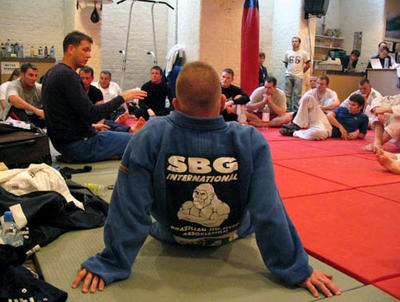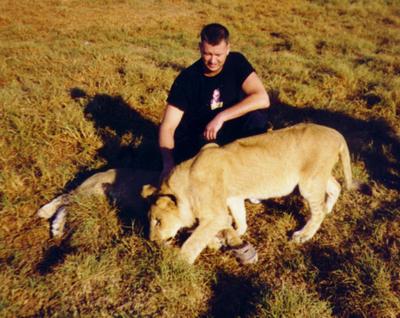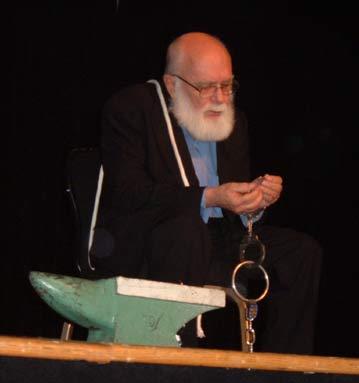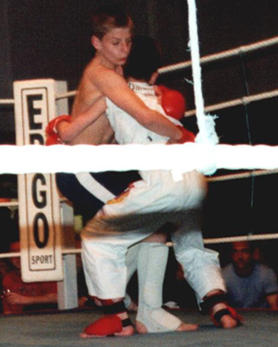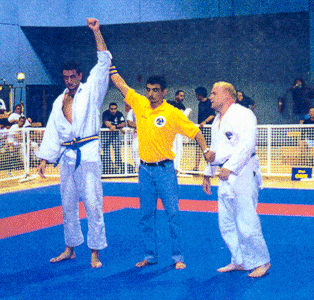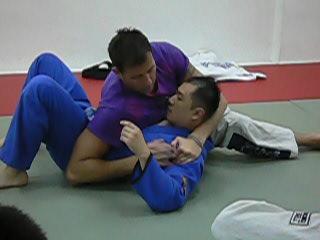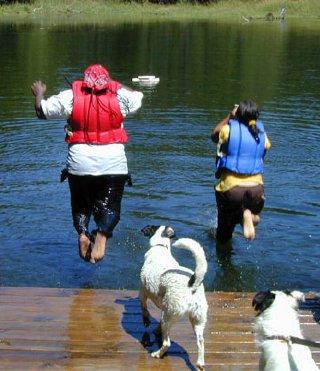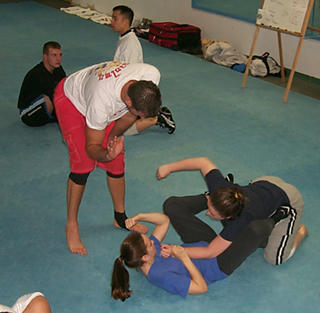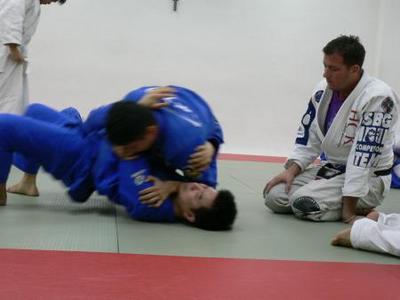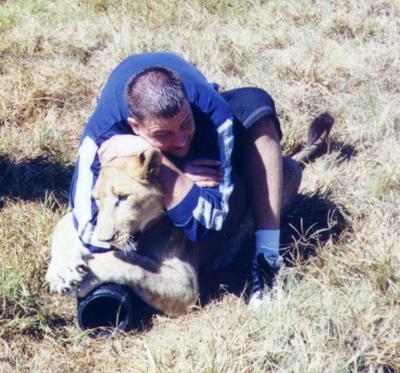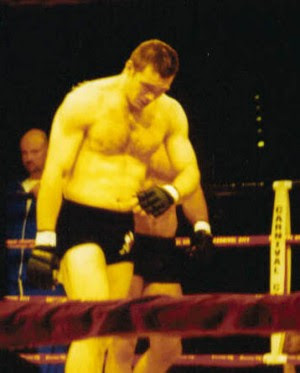An essay on the importance of “Aliveness” originally published in July 30, 2005
I have traveled, literally, all over the world over the last several years and it has been a great privilege for me to do so. The reason for my travels has been seminars, and regardless of where I am, I always start them the same way. I explain that my main message, the thing I am most interested in sharing with people, with communicating effectively, is the message of Aliveness.
Occasionally I am asked why I bother? Why not just teach some functional fighting skills, and leave it at that. Why explain the process? Why discuss the differences? In short, why is Alivenes the main message?
And my answer to that can be summed up in four words: it is SO healthy!
When our intentions regarding the activity we are engaging in are clear, honest, and open, then that ‘thing’ (activity-event) becomes incredibly healthy.
It is about Authenticity.
In other words, if someone says “I do Tai Chi because I find it a relaxing form of moving meditation“. I say, rock on! In fact, I might even join them.
However, if someone says “No need for Doctors. Tai Chi will cure your cancer.” Then I may need to question that. And that questioning is also incredibly healthy. Likewise, if they say “Tai Chi will serve as a wonderful form of self defense”. Then, I will also want to question that. Those claims, ‘cures cancer’, and ‘good for self defense’, are verifiable within objective reality and, as such, if we are really interested in Truth with the capitol T, then not only should we question those statements, I believe we have an obligation to.
I think that is common sense. When we don’t question such statements within ourselves, and accept them solely at face value, then we find ourselves lost, deceived, and often hurt.
Granted, one of those things (cures cancer) may be far more serious then the other but both are equally irresponsible, and I never claimed to have the most ‘serious‘ job; just a blessed one.
So, let me be clear about what I mean when I say ‘question‘.
We come to the question of speaking publicly on it. To be clear, I don’t advocate that for everyone. In fact, the only thing I believe matters is that we are honest within our own self about our own intentions and that we remain skeptical, and question all forms, and statements of authority for ourselves.
Whether or not someone then goes out and speaks to others about their findings is an individual thing. I can only say I am really, really grateful that some people do.
I think of the Amazing Randi, who has been debunking charlatans like Uri Geller for well over thirty years. His writings had a great impact on me when I was a teenager. I remember watching Uri Geller on television and feeling like something was just not ‘right’. His book helped validate my own critical thinking on the matter.
Lord knows that if this world could use a little more of something, then ‘critical thinking’ would rank VERY high on that list. Just under love and compassion, in my opinion.
I felt much the same about martial arts as I think Randi and many others felt about the scams of Uri Geller. I felt like I had been deceived, whether intentionally, or through ignorance, but deceived either way. That is never a good way to feel and it can, and does, happen to us all. Uri Geller deceived a large pool of highly educated scientists at the Stanford Research Institute, using what amounted to poor magic tricks. Just as thousands of people have been deceived by fraudulent martial arts, only to find out that what they where being taught might, in reality, get them hurt; especially if they believed it worked! (Witness the first few UFC’s for an example).
Did they want to believe, or where they just naive?
I have a good friend who recently sat in on an interview with a major martial arts figure. This man being interviewed is known as one of the leading authorities in “pressure points”, which he claims are hidden within ‘katas’. When asked why we don’t see this amazing pressure point knock outs in full contact sports, he said, “They have been banned“. When pressed as to why that would stop a grappler from striking a point on the body which was legal within most sports, he said, “Well, you have to hit three points almost at the same time, and it depends on what time of day it is!” I am paraphrasing from memory, but I promise the exact quotes would be equally absurd. He then explained how these points are different on men and woman, and which order they need to be struck. My friend then asked, “What if the guy you are fighting was gay? Would you use the male points, or the female points?” This person sat very still for a moment, and then he said, “Use the female points.”
Sadly, he was deadly serious.
This man then went on to explain how you can knock someone down using just a sound, which he began to make. My friend emulated the sound, and then asked, “If I was in that corner of the room making this sound, and someone else was in the other corner making this sound, would you consider it a mass attack?” After some thought the man answered, “Yes“.
And no, I am not kidding.
So I still see Aliveness as the core message.
When Aliveness is compromised, the entire structure falls apart. This happens because Authenticity is lost. The results are not healthy.
When Aliveness is maintained, then everything else seems to come right in the end. Once the proper methods for drilling and coaching are added in, the sky is really the limit in terms of potential.
So having stated that, I will start off this BLOG with a basic Aliveness Q & A. These answers have been gathered over many years, and all these questions have been asked many hundreds of times. This section details the answers we have given, time and time again.
-Enjoy
“In considering whether being Alive is good, we must realize that what matters is not what the mind thinks about being, but only the experience of being. This experience can only be had when the mind is not.”
– Robert Powell
* * *
What is Aliveness?
Aliveness is timing, energy, and motion.
What do you mean by timing, energy, & motion?
For something to be truly Alive in what we do then it has have three key elements: movement, timing, and energy (resistance). If you are missing any one of these then it is not Alive.
Movement means real footwork, not contrived, not in a pattern. On the ground it means exactly that, also. Movement, if the person is just laying there, not moving as you apply your lock or move, that is not Alive. In the clinch it’s the same; pushing, pulling, moving.
Timing is, of course, just that. If it’s in a predictable rhythm, a pattern, a repeatable series of sets, etc., then you are not acquiring or developing timing, just motion speed.
Energy is swinging the stick like someone would really swing it. Don’t stop at centerline. Punch with the energy of someone who wants to hit you. Not locking your arm out so your partner can look good doing the destruction, or trap, or silat sweep, etc. You must move, have a sense of timing, and progressive resistance.
Why do you place so much emphasis on this point as opposed to others?
Aliveness is everything. If a person grasps the principle and truly understands what is mean by it., then they can never be bullshitted again. That’s why I emphasize it so much. I am also constantly being asked, “What’s better? This or that? This style or that style? Why don’t you do this drill anymore? Why do you say this doesn’t work? The answer to all those questions is Aliveness. So, once they grasp what that means then about one thousand and one of their questions are answered for them. It’s everything.
However, if someone wants to collect a certificate from a well-known “Sifu”, or look cool doing two person forms, then they will not care or pay attention to the concept of Aliveness.
Why do people then find the Aliveness concept so difficult to accept?
I think that is because when some people start to train Alive, and expose their students to Alive training, they often have to throw out a major portion of the curriculum they learned before. This is because it is shown to not work when applied against a resisting opponent. And Aliveness gauges that very quickly.
All of the sudden the premium is placed on performance and arts that perform well: boxing, wrestling, Judo, Muay Thai, BJJ, and others, become the base.
What is the distinction between “delivery systems”, & personal “style”?
“Style” is always very individual. Each fighter has his/her own “style” and it’s acquired only through sparring and Alive training. In that action against a resisting opponent, the athlete discovers how to make the delivery system work for them. That is their “style”.
However, Delivery Systems always remain fairly constant, regardless of the individual body.
In other words, there is a proper way to put on a rear naked choke. As long as humans have the same design to their bodies, that ‘technique’ will remain the same. That choke is an example of “delivery system“.
That is why the typical JKDC method of a buffet approach, picking and choosing from many arts regardless of the delivery system, is such a poor idea. Without solid skill in the basics of the delivery systems of stand up, clinch, and ground, you will not be able to fight, or apply any of the information. Sticking to the simple basics, drilling Alive, and sparring, are the only ways we have found to acquire real functional skill.
Delivery systems can be tested, and it’s obvious what works and what will not. MMA has shown the boxing, wrestling, and BJJ delivery systems to be of great value. So the delivery systems fighters choose tend to all be the same. Someone trained in say ‘Silat’, without that background in the functional delivery systems mentioned above, would be unable to compete in MMA. They cannot defend themselves against such opponents.
However, each fighter naturally develops their own style, as they practice, drill, spar, and fight. No two BJJ fighters are the same, yet they all use the same delivery system. No two boxers are the same, yet they all use the same delivery systems.
It’s all very simple and clear.
But isn’t ALL just up to the individual.
There are no superior delivery systems are there?
There is a proper way to perform a rear naked choke that will allow you to achieve the desired results as quickly and efficiently as possible. This is simply a reality. Likewise, when there is a proper way to throw a right cross there may be many variations to ‘how’ it is thrown. This is ‘style’ and every boxer will have his own, but the fundamental body mechanics, such as rotation of the hips, are based on the laws of gravity and motion, and this is the delivery system.
Whether people choose to acknowledge that reality does not change the truism.
As an example, everyone who teaches functional ground fighting these days is incorporating the guard, mount, etc. They may call it Submission wrestling, but it’s the same delivery system.
Since the Brazilians brought that delivery system to prominence I feel it’s important for me to give them credit but, ultimately, the name of the style is not important. The reality that the delivery system is backed by principles of leverage and timing, and works against resisting opponents; that is what is important.
Can you give me a better example of what you mean when you say ‘delivery system’?
Sure, Brazilian Jiu-Jitsu could be called a ‘style’. Shooto could be called a ‘style’ but, if you took a close look at two of the top players, as an example I will say Rumino Sato of Shooto, and Renzo Gracie of BJJ, then you would see that they are using the same delivery system. They train the same positions, guard, mount, crossides, head and arm, etc. The same submissions, arm bars, leg locks, chokes, etc., and the same types of drills, passing the guard, drilling leg locks, etc. So they, essentially, train in the same delivery system. The Shooto, BJJ name becomes moot at that point.
Without that delivery system neither one would be as good of a fighter on the ground. That is just a fact. Imagine if Sato didn’t know what the guard was, or could never hold that position, or if Renzo didn’t train his escapes from mount.
A delivery system is just that, a system of body mechanics, or movements.
Here is another example: both JJ Machado and Rigan Machado teach Brazilian Jiu-Jitsu. If you asked them to teach you a shoulder lock from mount position I am sure they would both teach you the same method of delivery. Similarly, how to set your weight, hold position, crank the joint, etc., would be similar. That is because there is a best-known way to do this. That may not be the politically correct thing to say, but it is the truth.
Now as far as ‘style’ goes, both have a totally different style. Rigan is slow and crushing, and works an amazing top game that makes you feel like a crushed bug. JJ has a fast, machine gun like, attacking game from the guard. JJ puts the word active into his guard game in a whole new way. So they both have very different styles, but the same delivery system.
Then, to clarify, by your definition, what is a ‘style’?
Good question. A style is an individual’s personal method of application of a delivery system.
It is worth knowing that you cannot develop a personal style unless you train Alive, or at the very least, spar.
So how do you develop your own “style”?
It is not a matter of taking different pieces from different arts, (the Concepts method), or learning an imitating someone else’s style, (the Original method).
Rather, it is a matter of learning the basic delivery systems and then training Alive. That process is JKD. Not everyone gets that.
Can there be real JKD without Aliveness?
No, without Alive training you cannot really develop your own game, your own “style”; not reaching a level where you have your own style equals not doing JKD.
JKD is not a matter of tracing your lineage back to a certain person, and it’s not a matter of having some ink printed on a piece of paper from Kinkos. Nor is it a matter of accumulating a mass of dead pattern drills, or Chi Sau skill. Doing JKD is a matter of reaching a point in fighting where you begin to develop your own personal ‘style’ in all ranges of combat. That can ONLY be done through Aliveness. That is just the reality of things, and it’s a lack of understanding about this point that has lead to all the confusion.
Why do you think there are a lot of instructors that are still not teaching with Aliveness?
There are two reasons. One is that they don’t know how yet. They just don’t know exactly what Aliveness is. Two is fear. They are smart enough to know what Aliveness is, but the curriculum that such a principle would demand is something they are scared to get into 100% of the time. They have too much they would need to throw away, or stop teaching. They have a position or reputation that they have spent years developing, and they feel like they have come to far to step back and admit that perhaps they where wrong in the past, and that there is a better way. That’s too bad, because that attitude prevents growth, and produces fear. Fear leads to anger, and that anger comes out as a defensive reaction. You have to be willing to let go.
So there is such a thing as superior delivery systems?
Let me give you another example: let’s use a hip throw. You can find the hip throw in Freestyle wrestling, Greco Wrestling, Judo, Jiu-Jitsu, Sambo, Mongolian Wrestling, Icelandic wrestling, swedish wrestling, and Chinese wrestling, just to name a few. However, the Delivery System for the hip throw, or ‘hip toss’ always remains the same. The mechanics of the move are, essentially, always the same; a back step, level change, hip bump, and toss. Why? There is a proper way to do it and every art that trains Alive in throwing, has found it.
I could go on and on with examples, but, hopefully, you see the point. Without the delivery system you cannot become familiar with the range, and thus you cannot effectively realize the goal of JKD, to become effective at all ranges.
Whether you choose to call that delivery system BJJ, Shooto, or wolverine-style, is redundant, not because it’s been posted before, but because it is a semantic, and not a real difference.
Yes, but not everyone can be a good fighter? What about those that say you can be a good technician without necessarily being a good fighter?
Think about it, how can you be a good technician if you can’t fight? It doesn’t make any sense. You don’t say, Hey, that guy is a good boxing technician but when he spars he just gets mauled every time. Or that wrestler is a good technician, but his takedowns suck, or that Brazilian Jiu-Jitsu guy is a good technician, but he cant fight on the ground at all. If you said that you would sound insane but people say that in JKD all the time. It’s another in a long line of myths.
You can be a tough fighter without being technical, due to aggression, size, explosiveness, strength, etc., but you cannot be a good technician without being able to fight. It’s impossible.
It’s similar to when people tell me they think I have taken the art out of martial arts. That it’s all about fighting only with us. I reply, art of what?
The art is in the performance; the doing. Art is in the performance, sharing, and experience of the training itself.
Also, anyone can be a fighter. A good coach can show anyone of even moderate to low athletic ability and intelligence what it takes to become a good fighter. Now, not everyone may then want, or need, to make the sacrifices necessary to get to that level of performance.
If all you train are basics, then won’t you be training only for the short term objective of ‘performance‘?
There is no such thing as “advanced” techniques in fighting.
The same arm bar Rickson Gracie uses is the same arm bar a white belt with one-month experience uses. It’s the same triangle choke, the same elbow escape, etc. The difference between ‘advanced‘ technique, and ‘beginner‘ technique, is simply the timing, tightness, and efficiency of the movement.
The same holds true for wrestling. The same double leg 6 years olds are taught in pee-wee wrestling class is the same double leg the Olympic level “experts” use.
In Judo, experts of the art spend lifetimes perfecting two or three of the “basic” throws. Yes, the exact same throws taught to all beginners.
Lennox Lewis doesn’t throw an “advanced” left hook. It’s the same basics, same basics, same basics. Fundamentals, that are what ALL functional fighting arts offer.
Fundamentals done really well…those are advanced techniques.
If all you have are basics, what can you offer others?
The answer is = everything.
But I don’t believe in throwing a new person in over their head and having them spar in the first few months of training?
Yes, we don’t usually suggest throwing a new person into sparring. There are far better methods.
Is such and such art functional?
My message and that of the gym is Aliveness.
If you understand that message, and what Aliveness means then you can look at any art and see right away if the training methods they use will be at all functional. As such, there is no need for any of us to single out specific arts or instructors, nor is that the point.
First things first:
My Instructor say’s Kata training is useful.
Do you see use in Kata, forms, or Djurus?
None, in fact it’s most likely to be counter-productive.
Well, since boxers hit bags, and football players run tires, don’t you believe you need a mixture of both Alive & dead training?
What you are describing is not what we would call a “dead” drill, but rather a set of conditioning exercises.
Yes, you can lift weights, and then train with Aliveness and be highly skilled. You can also run tires, jump rope, do wind sprints, practice yoga (I am a big believer in that), and a host of assorted other conditioning drills, and if combined with a combat sport, yes, you can be highly skilled.
If you are going to train an activity specific movement designed for ‘fighting’, then you need to train movements that are functional and will work against aggressive, resisting attackers. When training those movements with another human being, you need to make that training Alive. *(see ‘I’ method) Otherwise your training will not translate under pressure.
But people lift weights, run tires, etc., to develop attributes, so why not do Sombradra, Hubud, Kata, or two-person forms for that reason?
Lifting weights is a conditioning drill. It will enhance your fighting skill because it makes you stronger, and in better shape. It will not teach you how to do an arm bar better. That requires an Alive opponent. That is what “isolation drilling” is for. In order to develop functional fighting skill you have to invest in thousands of hours Alive drilling against a resisting opponent. That is why it is important to separate conditioning drills from sports-specific training. Athletes don’t become confused, they know the distinction, but martial artists often do. There exists the problem.
Sombrada, as an example, is not taught as a ‘conditioning drill’. It is taught as a sports-specific drill. It has been alleged by those that teach it, that it is the first stage used to teach people to fight with a stick. It is not sports specific because it does not apply directly when you spar the way an arm bar does in BJJ. You don’t teach an “arm bar flow drill” to enhance attributes, and then, when it comes time to spar the arm bar say, “Okay, now we have to make these changes to make the arm bar work. Again, that would be counter-productive. That is one of the many reasons why Sombrada, as it is often taught, is not and Alive, or sport specific drill.
You could attempt to make the argument that it can be used to “enhance other attributes” which many people attempt to do, but why learn something the wrong way in order to enhance attributes. It is not rational.
How would you teach someone with zero experience how to stick fight then? As an example, how to enter and counter off a forehand or backhand swing?
1) Demonstrate a move that I feel will get them there.
2) Have both people gear up, (as little gear as possible). Have one party swing a forehand at the other, starting slower, but pulling through with the strike. Again, progressive resistance.
As this is done, the other person attempts to perform the skill you are trying to coach. In this case, cover and crash without eating the blow. As they get better we increase the resistance, and add a backhand. Within 5-10 minutes this should lead to one side feeding a random forehand or backhand, while the other side attempts to cover and crash.
After about 15-20 minutes we would probably just finish with some sparring if this is where the participants want to go with it. The level of intensity and type of equipment used there would depend on the level the athlete was comfortable with.
This is how we coach arm bars, jabs, kicks, double leg takedowns, sprawls, and stick fighting.
It’s the first stage of drilling and we refer to it as the:
I method
Introduce (should only take a few minutes, if not it is probably too complicated for the participants)
Isolate (Isolation sparring in an Alive way)
Incorporate (Add into your total game)
Nobody needs to gets hurt, there are no memorized patterns, no contrived footwork, and it’s all random and real. When they move to the sparring ‘stage’, nothing needs to be ‘tweaked‘ or modified, because they where trained correctly from day one. There is nothing to fix. There is no box pattern. It’s fun, and students like it.
As an experiment, or just for a change of pace, try this:
Teach one group of students using Sombrada/Hubud progressions, and then work them through all the different ‘stages’ you have to sparring. At the same time, have another group that just drills completely Alive, as I described above. No patterns, no Hubud, no B.S., just sparring drills against progressive resistance. Then, have them spar each other. The results should interest you, and more then anything else, make my point.
But not everyone will respond to ‘I’ method drilling right away will they? Don’t some people need to be walked through dead patterns first?
If you are making the assumption that ‘drills’ must be done in a pattern, please look at that assumption. They do not. Furthermore, you gain little value from the drill in terms of any attributes, beyond introducing a movement, when you are operating within a pattern*. To actually “drill” correctly there must not be a contrived pattern, and there is no reason to start with one beyond ignorance born out of ‘tradition’.
*(note: by contrived pattern I am speaking specifically of a two-person form. I do this, you respond with that, etc. Sometimes, good combinations are linked, but when we ‘drill’ we want to work those combos against a resisting opponent. Otherwise there is no timing and we are still at the “I”ntroduction stage of the game.)
You are not developing sensitivity until you throw away the pattern. In other words, you cannot get an increased sense of ‘timing’ from hitting a wooden dummy or a stuffed bag. You can get ‘sport-specific’ repetitions in on the stuffed bag. That will help you build the heart and muscles, which propel the tool. Also, it will help you remember combinations but it will never give you any type of ‘timing’, because it is not “Alive”.
Sensitivity is nothing but ‘timing’ applied to ‘tactile sense’. Again, you need another human for this. You cannot get sensitivity from a wooden dummy or heavy bag, anymore then you can get ‘timing’ from a wooden dummy and heavy bag.
There are a hundred thousand ways to gain true sensitivity from day one, without getting hurt, with sports specific moves, that do not involve patterns, that can be taught to anyone, that are Alive.
All you have to do is let go and create some.
But people like the goofy stuff?
I disagree.
Let me give you a concrete example. Often, I hear from instructors that state that some students want that ‘stuff’. I have taught seminars before where the host begged me to show some ‘trapping’ because the students would love it, and I was told that the group that I was teaching to, (as non-athletic a group as you could find) would not respond to my approach. Anyone who knows me knows I don’t I don’t compromise on this, ever. So, I showed no hand trapping, or one and two-step sparring. I taught as I always teach, and the students loved it. They said to the instructor, “Why didn’t you show us this approach before?”
That has been my experience all over the world.
Would I have had the muscle memory or coordination with/without the drill?
What would you say if I threw a right cross in sparring, after being taught reverse punches and Karate blocks? Then, when it was pointed out to me that my cross didn’t look anything like my reverse punches and karate blocks I stated, “True, but would I have had the muscle memory or coordination with/without the drill? Personally, I don’t think so.”
It just makes no sense.
Why do so many JKD/Kail instructors still teach drills like Sombrada, and Hubud then?
My god’s honest guess is that most instructors simply don’t know how else to do it. Since they don’t understand how to drill they fear they will lose students by teaching Alive. They believe that students ‘want’ or need these drills, or that to stay in business they have to do it this way.
Again, that is a fallacy. There are much better ways to teach. Just as safe, just as easy to learn, just as fun, and far more functional.
What is the De-Chau analogy?
It was an analogy that explained why it is important to always teach ‘principles’ for fighting with activity specific drills.
So, for example, I would talk about the mysterious “dropping” energy. I could then invent a two-person form to ‘demonstrate’ that principle. Perhaps a little dance where we stomp our feet a few times, like the chicken steps in Kali or a two-person patty cake form where we can play a game and try and slap each other’s hip before we perform the “drop”.
There would quickly be De-Chau experts, who were undefeatable at the game of De-Chau, and who could show you lots of cool switches, and variations of the De-Chau drill.
When questioned as to why the De-Chau drill looked nothing like a real fight, they would explain that De-Chau is just meant to teach you principles of “dropping energy”, and impart a few techniques. That’s why!
Or I could just teach an athlete to sprawl.
The sprawl teaches the “dropping energy”, but if you were to ask a wrestler what they where doing they would tell you they where learning to stop a takedown. Not learning “dropping energy”. The concept of learning the sprawling energy, without a sprawl, would seem absurd. That is just a common sense approach.
When you begin teaching forms and two person drills which are not activity specific and simply meant to demonstrate a ‘principle’, and athletes begin practicing as such, things get goofy and the functional art is lost rather quickly.
Isn’t it ignorant to claim as some have that Chi Sao is ineffective?
No, that is inside out. Ignorance comes from the root words, which imply something you “ignore”. In this case it would be the lack of any measured evidence for functional use.
Unfortunately the MA school I attend does not always use Aliveness (which you define so well in your videos and web site) as it’s guiding principal. People will often defend training methods were Aliveness is not a factor. During a discussion about training methods someone said to me, “What about boxers hitting the heavy bag, and speed bag there is no Aliveness there, So hitting the bags is a waist of time, huh? Hitting the speed bag doesn’t look anything like fighting so that must be a waste of time too, huh?” I replied that the heavy bag was good for things like body mechanics, and could be a great workout in itself. The only response was, “Well if there’s no aliveness how can it be any good, huh?” Anyway, just wondering if you had ever fielded a comment like this?
You are correct. People will defend their beliefs because they are feeling defensive. This usually has to do with personal identification with the method. And so the best thing you can do there is simply speak your truth, (never be afraid to do that!) smile, and walk on.
In regards to a heavy bag, you can make heavy bag training more realistic by moving around, and not using repeated patterns like a robot. However, there are many things we may do that improve are bodies that are not “Alive”. It’s just that all of those things fall under the category of conditioning/exercise. Lifting weights is not Alive, but it will have a direct impact on your body.
Aliveness comes in is when you include a partner. BJJ is a great example. You could roll around with a stuffed dummy on the mat, and practice knee ride, punches, etc. This would be very similar to a boxer hitting the heavy bag. However, if you never, or rarely wrestle “live” against a resisting opponent, you will never be able to compete or reach the performance level of even a beginner blue belt.
You must have Aliveness, it’s as simple as that, that’s where timing and ability come from. As it is in BJJ it is in stand-up and clinch.
You can’t teach beginners that way. How can you teach a whole seminar full of people that way? It would look chaotic?
Simply not true. I teach seminars all over the world without the aid of dead patterns. I teach stick, ground, clinch, stand-up, whatever, without ever busting into a pattern. All the while people learn quickly, have fun, laugh, and stay injury free.
What about the idea that these dead pattern drills are for self-perfection?
That is usually the last excuse for poor training methods that gets put out there. The thing to ask here is what is meant by the term “self perfection”? If that term is left without description, then the idea itself is absolutely meaningless. So it is important to ask for a description on this.
Once a description is given, ask yourself if an Alive training method would serve that description just as well, or much better. You will find this is always the case.
Remember, for something to be used for ‘self improvement’, it must first be true, real, and authentic.
If you are looking for real methods of “self-perfection” then you will find them in Alive training, in athletics. As the late, great Joseph Campbell stated, “The only peak experiences I have realized have come as a result of athletics.”
Don’t they thrown all the ‘self perfection’ or ‘spiritual side’ away when they train only Alive?
This is backwards; in reality the opposite is true. There is much writing regarding how functional athletic training can have serve as a deep and meaningful vehicle for self actualization, and realization.
How do you train Alive as you age?
Great question. There are three things:
1) Stay in shape. (You should do this anyway, as I assume you care about your body)
2) Train smart. Do not over train.
3) Use progressive resistance. There is no need to go balls out very often. In fact, There is a false idea out there that effective training needs to be rough and brutal, and like so many ideas that too is backwards.
That is also why I love Jits. It can be done slow and gentle and still be highly effective. What a beautiful art it is.
Remember, if you can’t pull off Tai Chi, or Silat, or Aikido, etc, now, as a younger, strong man, what good will it do you when you are older and less athletic? (This is why it amazes me when I hear people talking about saving those arts for when they are old. What sense does that make?) You need to use the same moves; you just have to be wiser, and smarter about how you apply them, and how you train.
Aliveness is for every-body!
Isn’t there are as many ways, as there are faces on the planet?
That’s so true when left that vague. Add the words (to execute a rear naked choke) and we begin to see that all people share similar bodies and, as such, the body mechanics and laws of physics applied to that motion will be similar in nature.
Here is a favorite Krishnamurti joke regarding that exact topic:
The devil and a friend were walking down the street, when they saw ahead of them a man stoop down and pick up something from the ground, look at it, and put it away in his pocket. The friend asked the devil, “What did that man pick up?” “He picked up a piece of the truth,” said the devil. “That is very bad business for you, then,” said his friend. “Oh, not at all,” the devil replied, “I am going to help him organize it!”
Truth of the truth:
Aliveness is about the freedom to use whatever works in the moment. It’s the right action at right time. Which is another name for true compassion. A freedom that is only fully felt when one is completely immersed in the present moment of now, and free of the burden of beliefs, which manifest as thoughts. It is a clear mind, fully aware of reality as it is now, and operating with absolute synchronicity within time and space. That is the real beginning of Aliveness.
